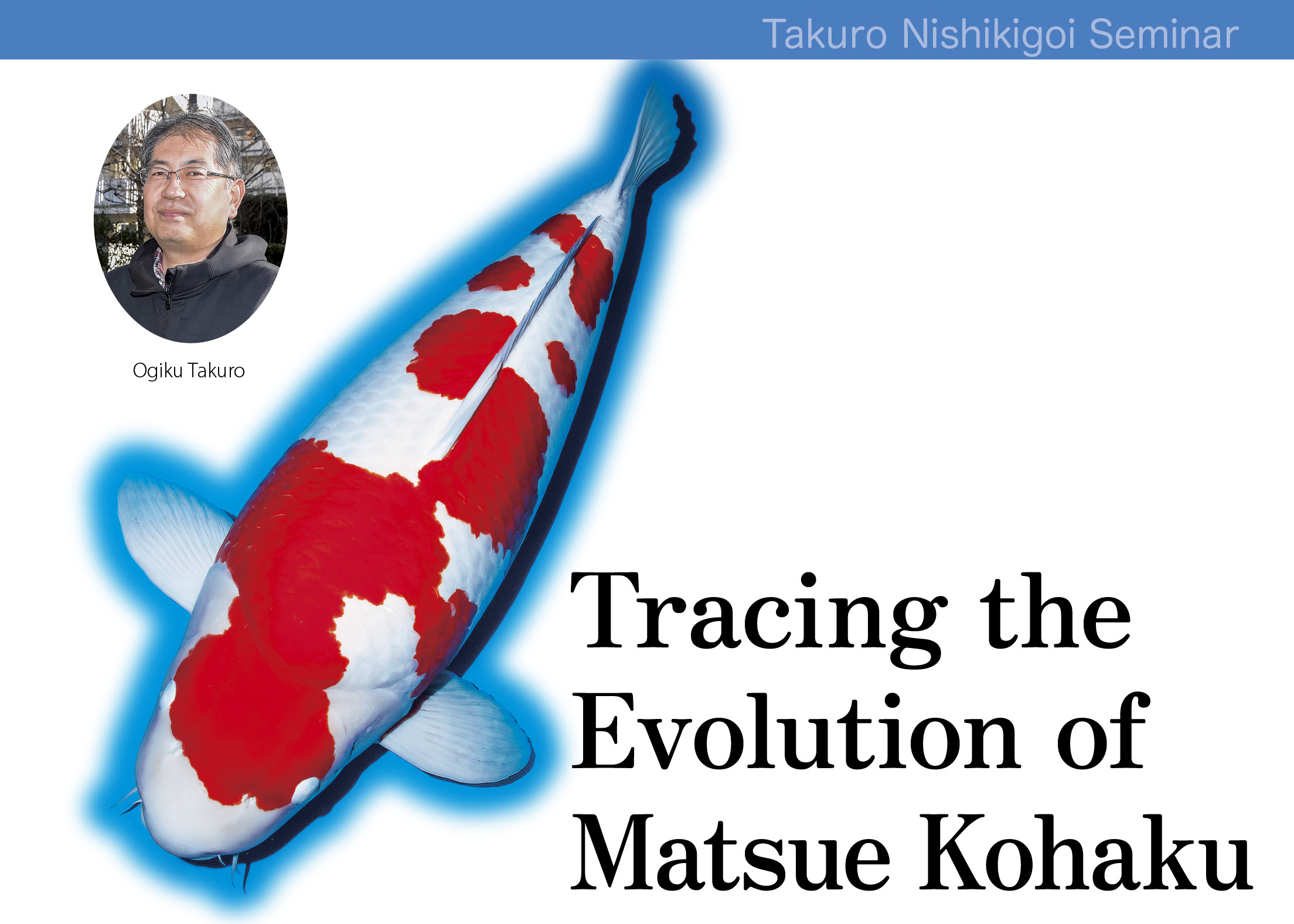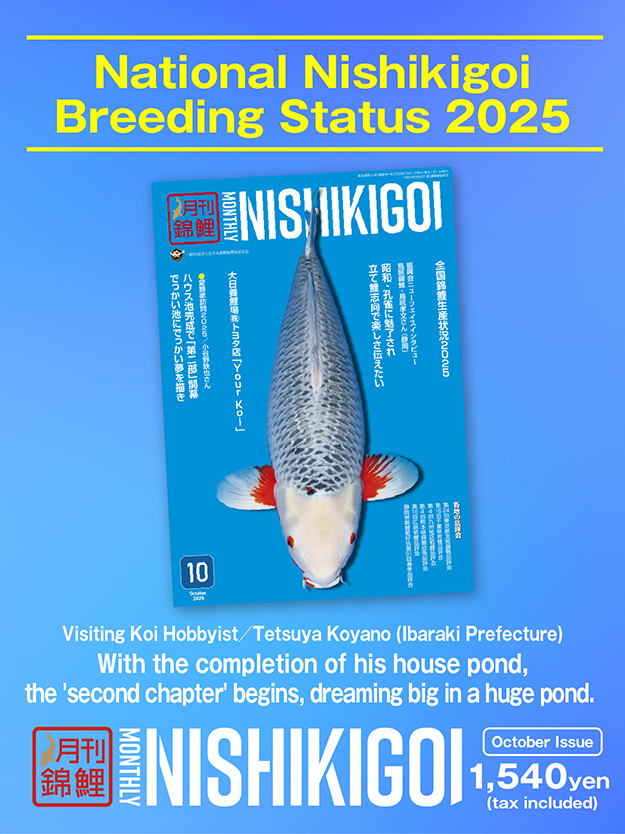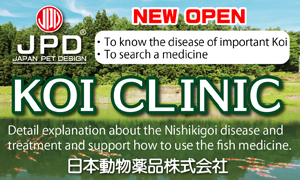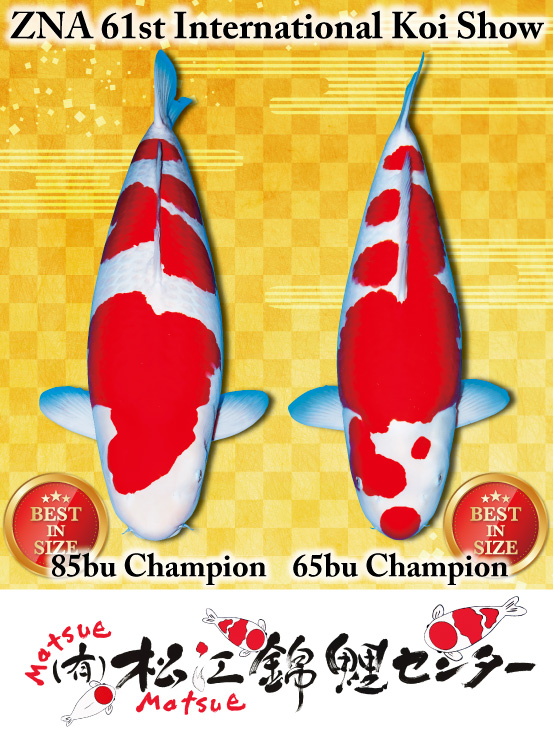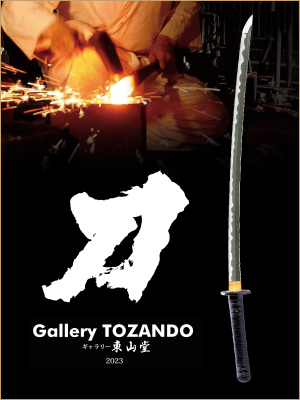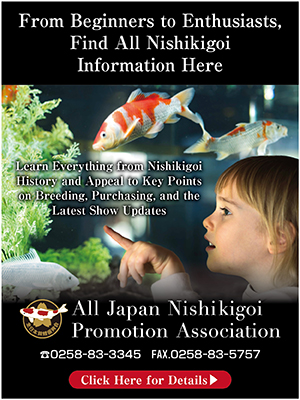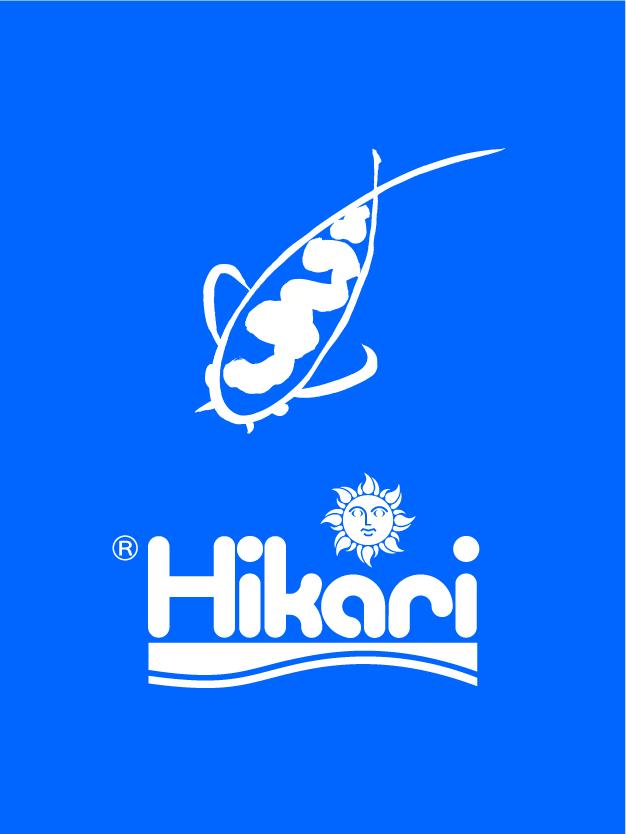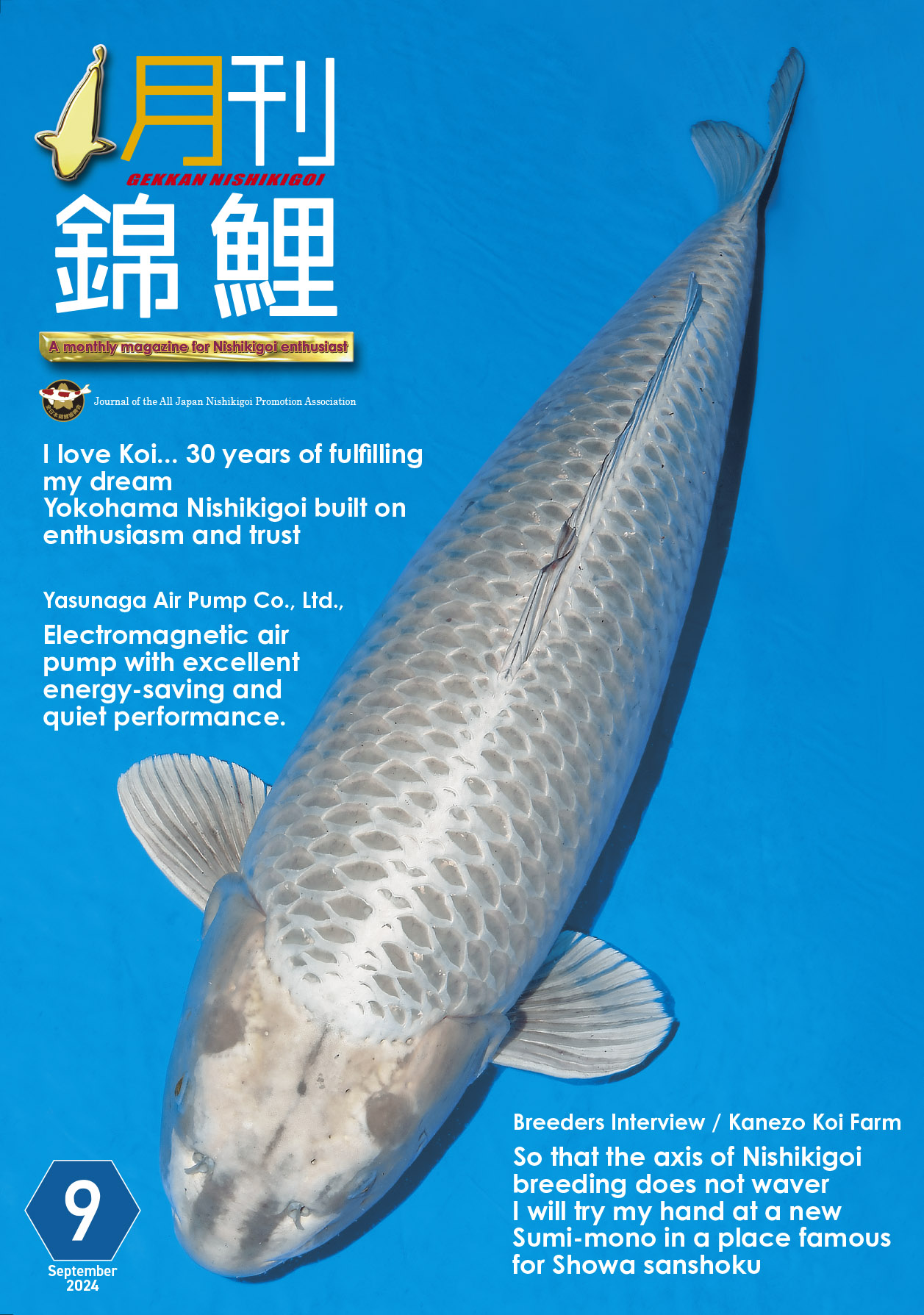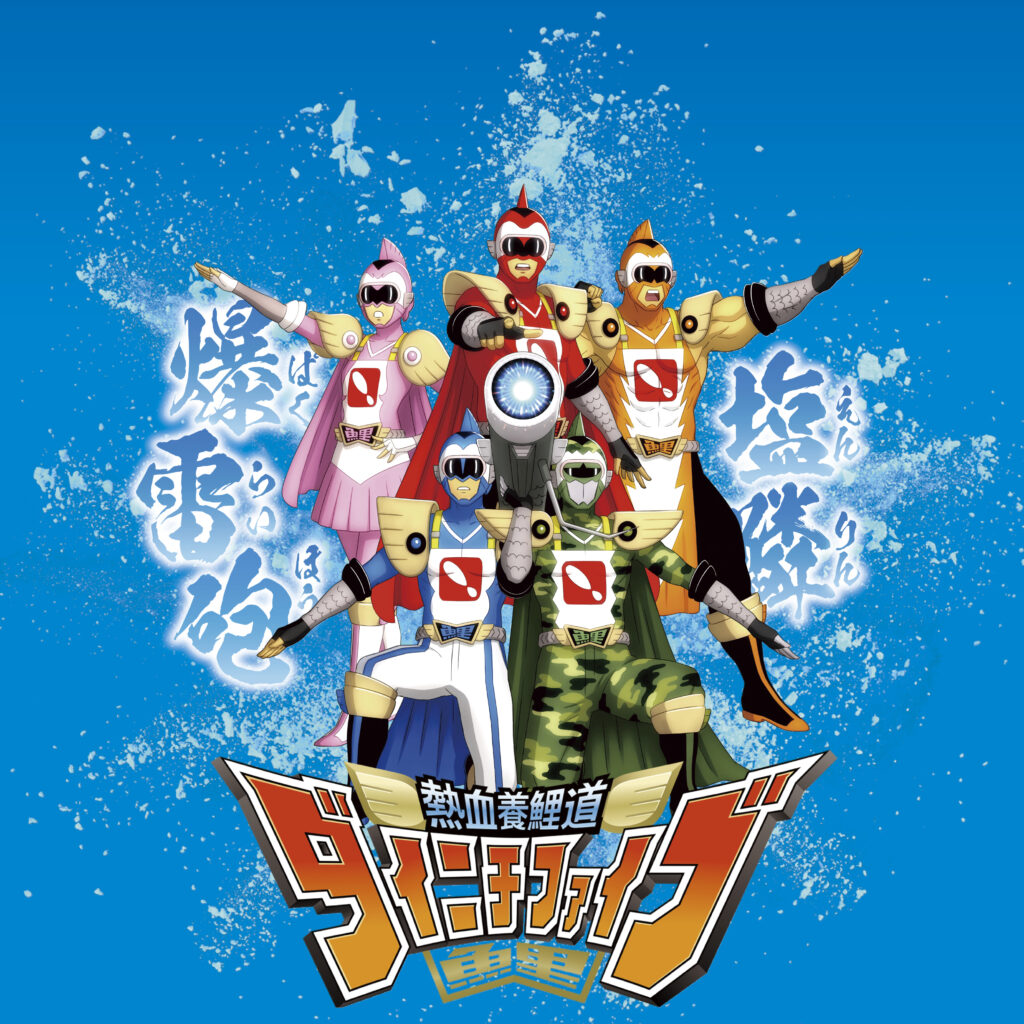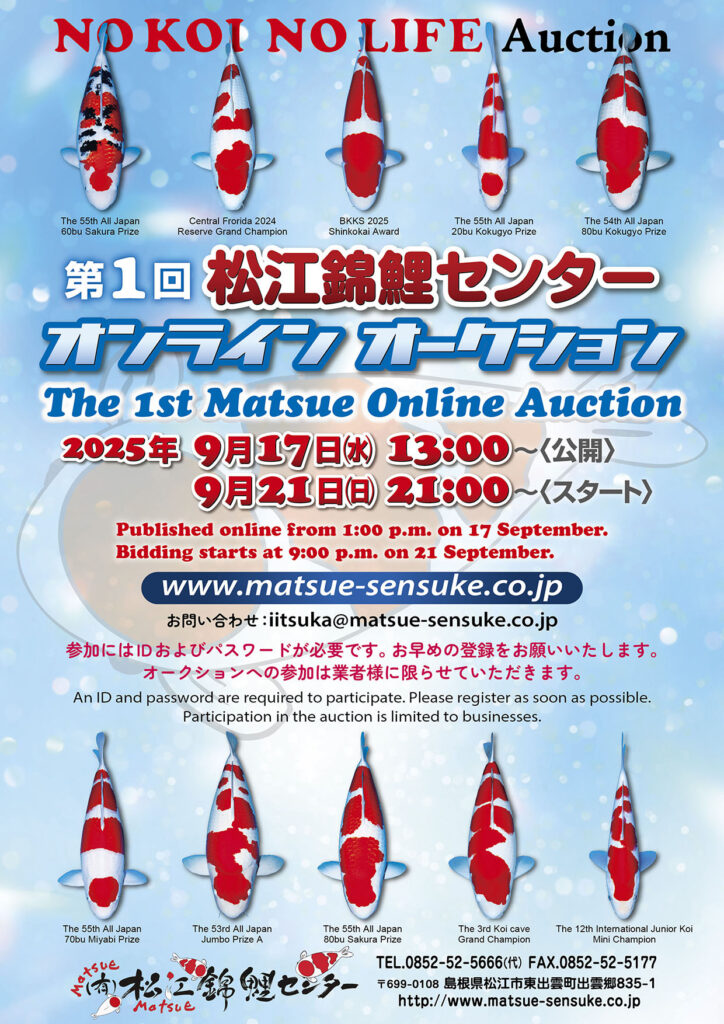The Future Prospects of Matsue Kohaku
― Now, let’s change the focus. This time, we would like Hiroaki to share his thoughts on eight two-year-old koi that we acquired from Matsue Nishikigoi Centre, specifically what kinds of changes might be expected when they are grown on in the mud pond this year, and what potential they may hold.
A (offspring of Hakuto)
Hiroaki: This koi actually lost weight once before you purchased it. It took some time to recover, but during that process, it quickly put on body mass around the midsection. While raising it, I felt that if it were put into the mud pond, it would gain volume in the latter stages. Also, the quality of its beni is excellent.
―Yes, the beni is good. Also, I liked the bridge and the width of the eyes, so I bought it. Some people might think that hi at the tail end should be a bit further forward, but this fish will look fine once it fills out.
Hiroaki: By the time it reaches three years old, you’ll start to see the shiroji along the sides of the body and the downward wrapping, so even if the hi at the tail end is positioned further back, the balance will work out. You don’t notice it much now, but in the future, the shiroji will develop into patterns.

B (offspring of Hakuto)
Hiroaki: This is a slightly different type even among Hakuto koi. I noticed it while raising it. The red was just too beautiful. I had never seen this kind of beni in Hakuto before, so I enjoyed raising it while appreciating its charm.
—It’s a koi with character. I think the pattern is well-balanced. It also has good body depth.

C (offspring of Hakuto)
Hiroaki: I was thinking that this fish might show the most change. Both in terms of sashi and beni, it’s still rough. However, based on my experience raising Hakuto, fish like this can undergo a complete transformation by the time they are three or four years old. It will come together beautifully while maintaining a solid structure. I feel it has great potential in the future.

D (offspring of Hakuto)
Hiroaki: This is a koi with excellent patterning. However, it’s still a bit slender, so it remains to be seen how its body will fill out in the future. While raising it, it didn’t develop into the style I was aiming for, so it might be more of a mud pond-type koi. The beni is soft.

E (offspring of Hakuto)
—Before we took all the koi out of the pond for the lottery, Shoichi Iizuka, the chairman of Matsue Nishikigoi Centre, said, ‘This is the best one’ (laughs).
Hiroaki: This koi still has the roughness typical of Hakuto. It will start to change from here. When we were bringing it over, Kazunari Takami said, ‘This is the best one.’ Since he also knows Hakuto well, he could already predict the kind of appearance it would have at three or four years old, which is why he made that statement.


